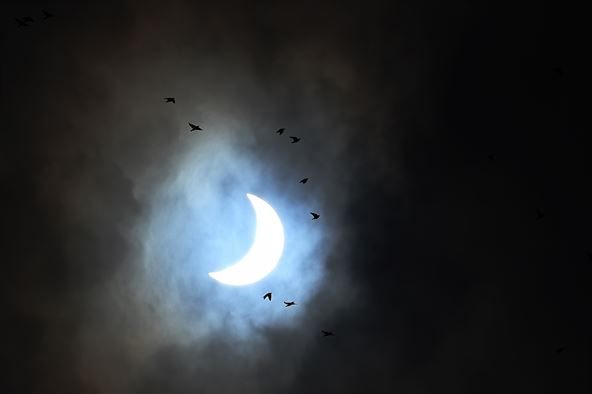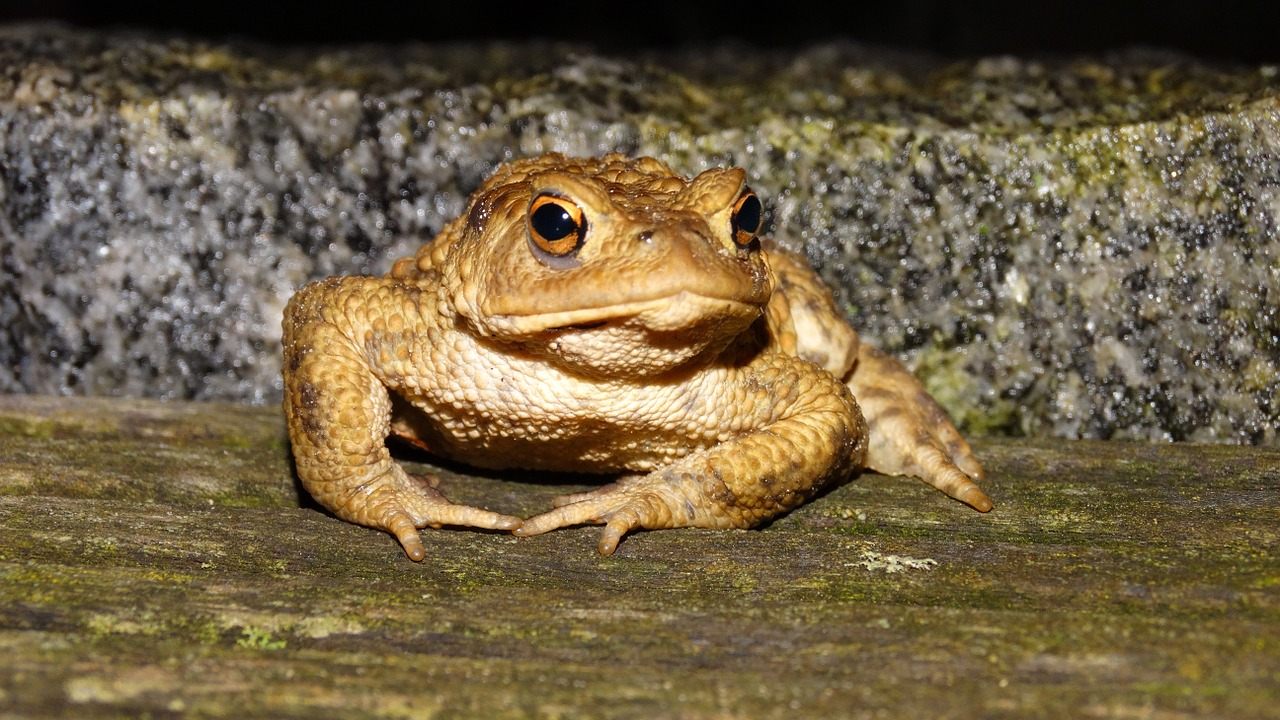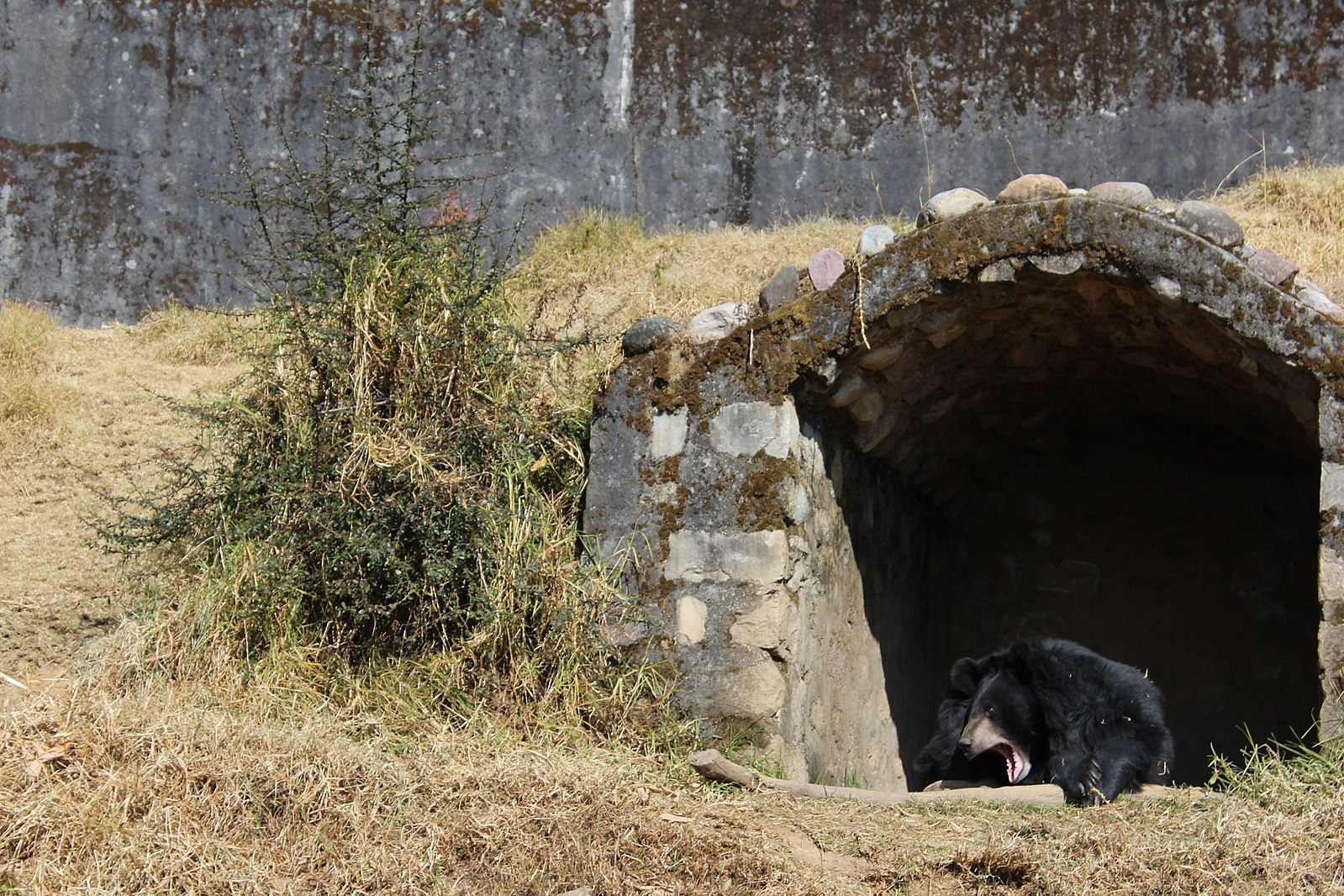Watching Animals Watch the Eclipse
Before and after the moon crosses the sun, interested people all over the U.S. will be spying on wildlife.

On Monday, August 21, Elise Ricard, like millions of others across the United States, will stare at the sky for about ninety seconds to watch the moon fully eclipse the sun.
Just before that, though, she’s going to try to spend five minutes or so watching a squirrel. And afterwards, if her mind isn’t too blown, she’s going to find that same squirrel, and watch it again.
We more or less know what people will get up to during the eclipse. They might renew their wedding vows, or scream, or listen to an appropriate and beloved pop song. Most will be looking upwards. But Ricard, a driving force behind the California Academy of Sciences’ “Life Responds” eclipse research project, is one of many researchers around the world who are dying to know something else: what are the other animals going to do?

People, including scientists, tell tales about watching animals react to an eclipse: seeing llamas line up calmly to observe it, or coming across whales throwing a pre-totality splash party. But many such stories are just that: stories, unsupported by broader data. In the past, when researchers have tried to ask this question more rigorously, they’ve had to be content with small-scale answers, necessarily focusing on one population of one species in one place. One paper, written in 1998, tells of schools of reef fish that “swam with alarm” when the sun disappeared. Another, about a 1991 eclipse, details the behavior of colonial orb-weaving spiders, which greeted the darkening sky by destroying and eating their own webs—a response that seems less dramatic when you consider that they do the same thing every night.
But as technology makes collaboration easier, some researchers have gotten more ambitious. In 2010, during a solar eclipse that passed over India, about a hundred volunteers took part in a project called EclipseWatch, using an online form to submit observations about animal behavior. (Some highlights: “dogs seemed unaffected,” and red-wattled laplings bathed “where they normally do not.”)
Seven years later, such possibilities look even brighter. For “Life Responds”—which also asks citizen scientists to record observations about how wildlife behave just before and just after the eclipse, using an existing app called iNaturalist—“we have this great confluence of fortunate things coming around,” says Ricard. One is the location of the path of totality, which cuts a large swath across the continental U.S. and happens to pass over dozens of national parks and open spaces.
Another is the eclipse’s popularity—if just a small percentage of eclipse-watchers participate in the campaign, that will still mean thousands of responses. Ricard hopes this will not only shed light on what individual animals do, but answer larger questions. “For instance, what percentage of eclipse coverage do you need to get a response from plants and animals?” she says. “Is 80 percent enough? Do you need to be in the 90 or 100 percent range?”
Megan McKenna, of the U.S. National Park Service’s Natural Sounds and Night Skies division, is working on answering similar questions in a different way. With help from researchers across the country, she’s putting audio recorders in remote areas of various national parks and monuments, where they can capture the private reactions of birds, insects, and other animals to the eclipse.
Changes in light tend to provoke some of nature’s noisiest times: “We’re trying to figure out what happens during an eclipse, and how it relates to a typical dawn and dusk chorus,” McKenna says. Seventeen parks and monuments are participating in the initiative—15 in the path of totality, and two just outside of it, for comparison’s sake.

So what does everyone expect will happen? For one thing, a lot of animals might try to go to sleep: “Birds will settle in their nests,” says ranger Joe Reasoner of Fort Laramie National Historic Site. “Chickens and cows will head toward the barn thinking it is evening time.” “Some mammals simply lay down,” adds another of the Fort’s rangers, Mike Evans. Meanwhile, nocturnal animals may think it’s their time to shine, and come out to eat and chat. “Crickets might start chirping,” writes Alvis Mar, a ranger at Agate Fossil Beds National Monument, in an email. “Some toads might become more active. Owls may hoot.”
All of these plans, of course, will be quickly scuppered when the sun reappears. At that point, researchers expect the animals might jump back into their daytime routines: coming out of the barn, greeting the “daybreak” with song, or (for the nocturnal ones) hiding again. As Shelley Buranek of John Day Fossil Beds National Monument puts it, “anecdotal evidence… suggests that [certain animals] will behave as if the day is ending and beginning anew.” In other words, they’ll treat the eclipse like regular life, but on fast-forward.

In some cases, though, experts are holding out for more surprising reactions. At the Tennessee Aquarium in Chattanooga, caretakers will be keeping a close eye on the American alligators, which tend to rumble during thunderstorms, and the ring-tailed and red-ruffed lemurs—which, as the zoo’s primate expert Chelsea Feast details in a press release, have a special relationship with the sun. “They are very in tune with the light cycle,” Feast says. “They may react with vocalizations…[or] they may sit quietly and just watch the sky.”
An understandable response, but one we’re interested in all the same. “We plan to have two GoPro cameras in the lemur exhibit,” assures the zoo’s communications director, Thom Benson. We wouldn’t want to miss their reactions just because we’ll be looking at the same thing.
Learn more about how you can participate in the “Life Responds” project here.





















Follow us on Twitter to get the latest on the world's hidden wonders.
Like us on Facebook to get the latest on the world's hidden wonders.
Follow us on Twitter Like us on Facebook